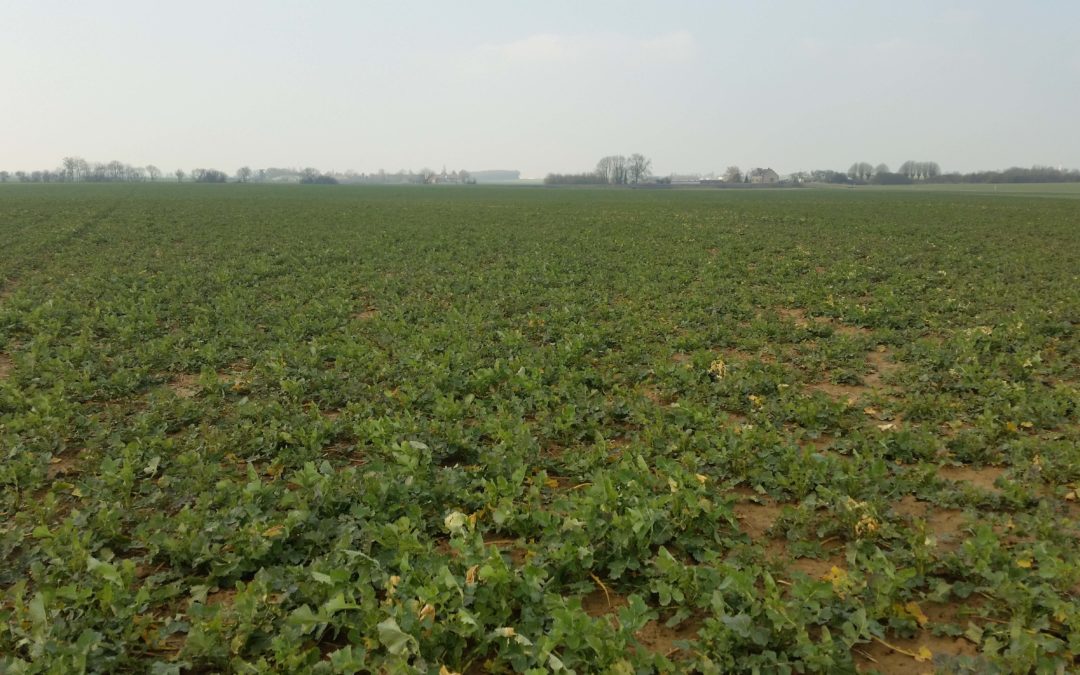A the end of the winter, rapeseed fresh biomass is a good uptake nitrogen indicator, thanks to nitrogen balance sheet method, one can calculate the required nitrogen amount.
Knowing accurately biomass in the field allow produce nitrogen requirements function of biomass level as indicated on below image from Sentinel 2 2018/01/26:
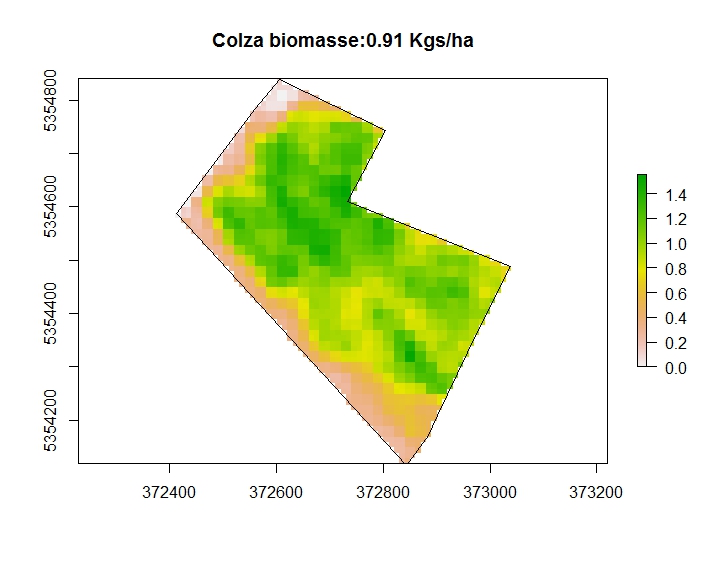
Spatial heterogeneity can easily be observed due to different soil types, stone content and some low biomass level due to low plant density level on the field shore.
If only biomass level is taken into account, nitrogen fertilization map can be produced for a 4.5T/ha objective yield in this case: Example is shown in below image:
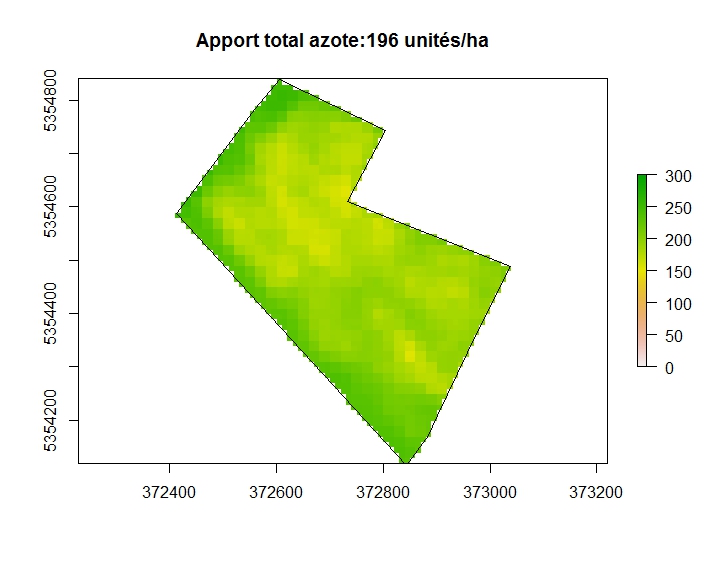
One can observe that the lower the biomass level, the higher the fertilizer nitrogen amount, is this judicious? I often hear farmers who tell me that many decision support systems advise high fertilization levels on bad soils areas in the field, indeed, in these places the biomass level is generally low and the farmer misspend money by over fertilize these areas.
From this knowledge, I haded two new functionalities in my decision support system:
- Take into account of the yield soil potential which is a rate (0..100) of the objective field yield. Farmer is probably the best expert for zoning his fields, this is achieved very simply using QGis and splitting the field into several polygons.
- Take into account of low biomass levels because or not of the soil behavior, or wild animals damages or low plant density like in that field due to rainfall just after the sowing causing crust formation on the field shore. In these areas that is misspend to invest in high fertilization because that biomass is too low to use it completely. The criterion to consider biomass as too low is the mean field minus the standard deviation biomass level. The nitrogen amount is calculated as a linear relationship between zero and defined threshold level, beyond this level, nitrogen amount is calculated inverse-linearly with biomass level.
The process starts with the potential soil map (% of maximum yield:4.5 T/ha):
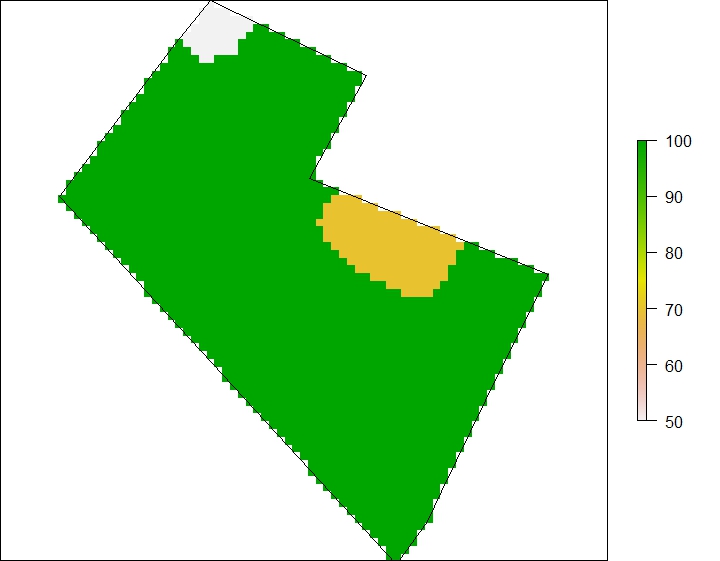
The DSS (Decision Support System) calculates an adjustment fertilizer amount coefficient function of biomass level:
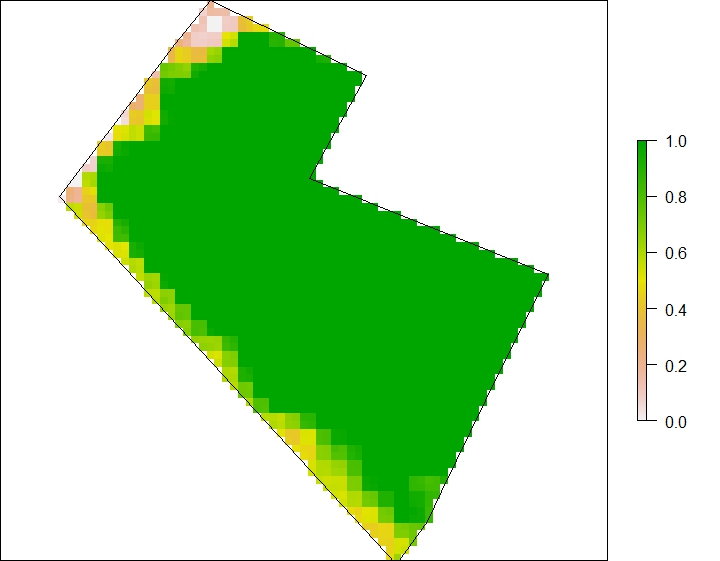
And finally, generates the nitrogen modulation map taking into account of both constraints: Soil potential and biomass level:
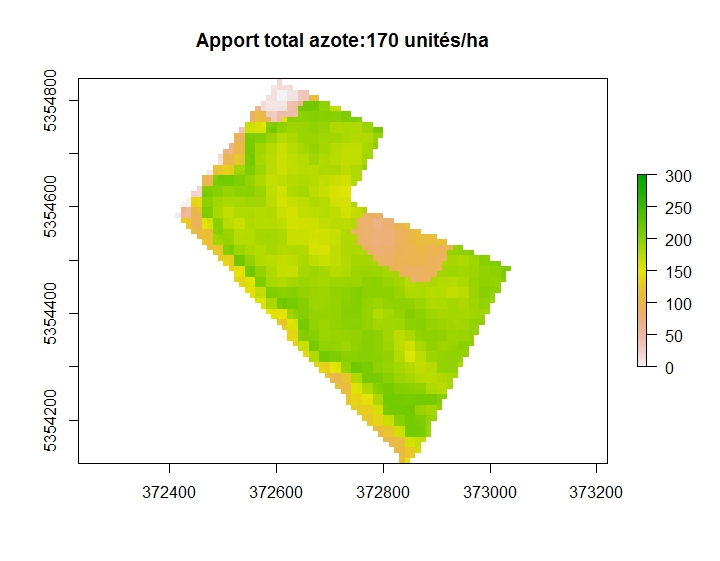
Using this process, 26 kgs/ha could be saved from the usually full fertilization.

